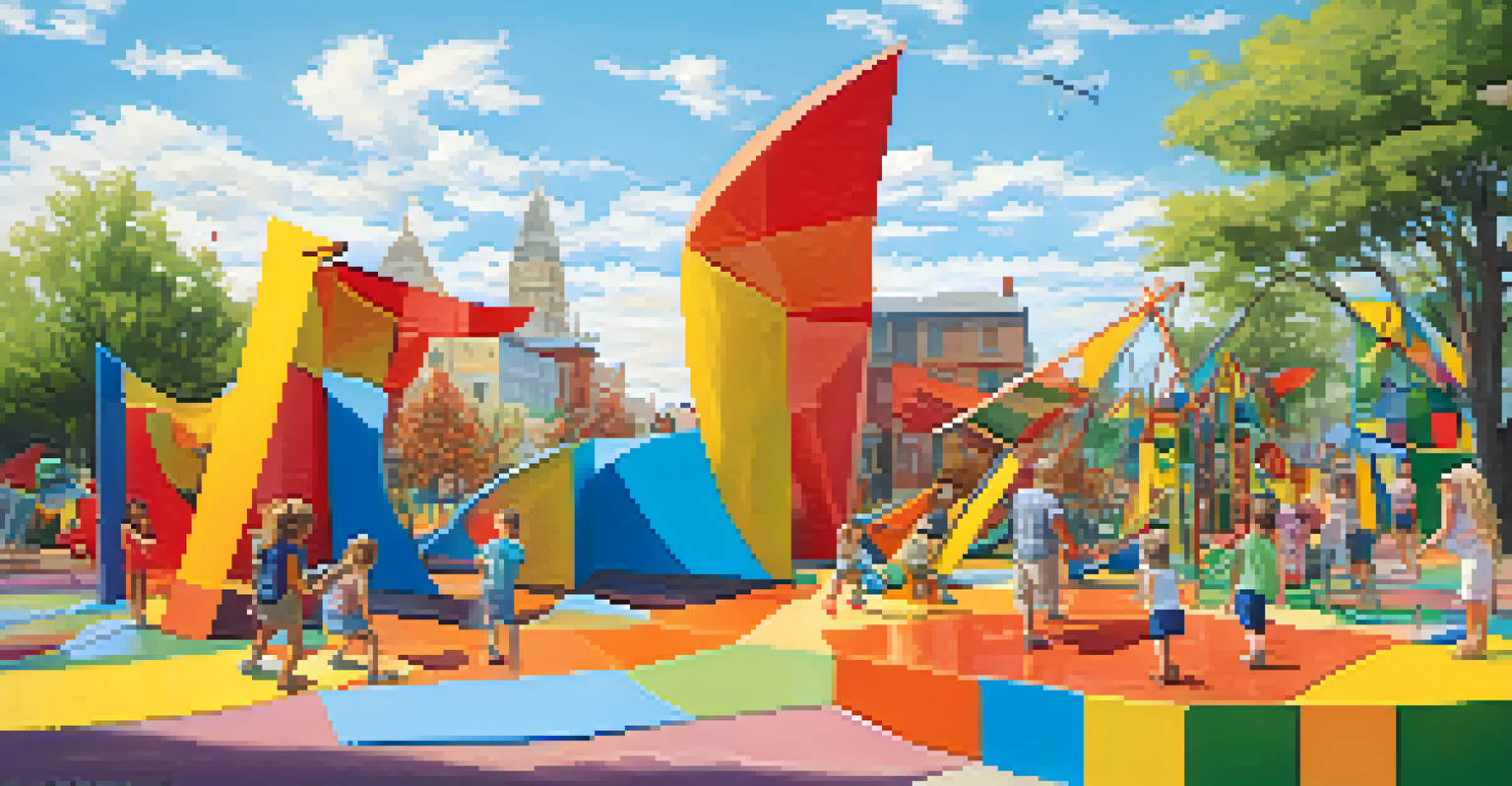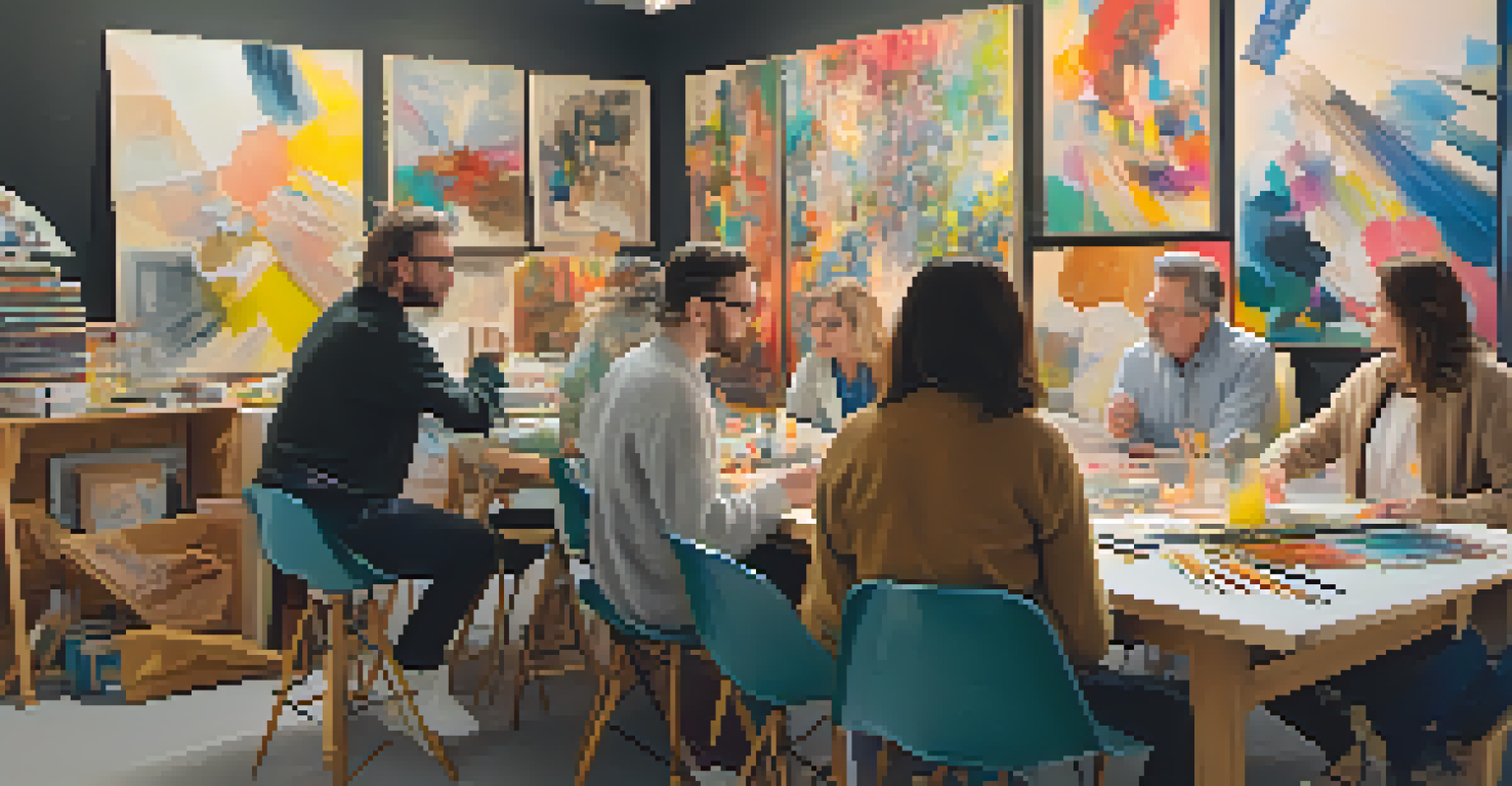The Connection Between Art and Play: A Creative Journey

Understanding the Essence of Art and Play
Art and play may seem like distinct activities at first glance, but they share a deeper connection. Both are forms of expression that allow individuals to communicate feelings, thoughts, and ideas without the constraints of conventional rules. Think of children drawing or building with blocks; they’re not just creating—they're exploring their imagination and emotions in a playful manner.
Every artist was first an amateur.
In essence, play invites spontaneity and exploration, while art serves as a canvas for those experiences. When we engage in these activities, we tap into our innermost creativity. This interplay between art and play enriches our understanding of both, revealing how they complement each other in profound ways.
Furthermore, this connection fosters a sense of joy and freedom that is crucial for personal development. It reminds us that creativity doesn't have to be serious or structured; rather, it can be a delightful adventure that encourages experimentation.
The Role of Playfulness in Artistic Expression
Playfulness is a critical ingredient in artistic expression. When artists approach their work with a playful mindset, they unlock new dimensions of creativity that might otherwise remain hidden. This can be seen in various art forms, from abstract painting to improvisational theater, where the intention is to explore rather than conform to expectations.

For example, consider how a musician might playfully experiment with different sounds and rhythms, leading to unexpected and innovative compositions. This freedom to explore without fear of judgment can lead to some of the most authentic and impactful art. It encourages artists to take risks and embrace the unexpected.
Art and Play: A Creative Duo
Art and play are interconnected forms of expression that foster creativity and personal development.
By fostering an environment that values playfulness, artists are more likely to produce work that resonates deeply with others. This connection not only enhances their creative process but also allows audiences to engage with the art in a more meaningful way.
Art as a Playground for Imagination
Think of art as a vast playground for the imagination. Just like children use swings, slides, and sandboxes to explore their physical abilities, artists use colors, textures, and forms to explore their creative abilities. This playground environment encourages them to push boundaries and experiment freely.
Play is the highest form of research.
When artists allow themselves to play with their materials, they often discover new techniques and perspectives. For instance, a painter might start with one intention but end up creating something entirely different through the process of play. This is where true innovation occurs, as the unexpected choices lead to unique and captivating results.
Moreover, this playground metaphor extends beyond the physical act of creating art; it applies to the mindset of the artist as well. Embracing a playful attitude helps artists stay open to inspiration and allows their creativity to flourish.
The Impact of Collaborative Play in Art
Collaboration is another powerful aspect of the connection between art and play. When artists come together to create, they engage in a form of play that can lead to exciting new ideas and outcomes. This shared experience allows for a blending of perspectives, much like children working together on a group project.
Consider collaborative murals or ensemble performances, where each participant brings their unique voice to the table. The playful interaction between artists can spark creativity in ways that solitary work often cannot. It’s in this collaborative play that art becomes a communal experience, enriching not just the creators but also the audience.
Collaboration Sparks Innovation
Collaborative play in art leads to exciting new ideas and enriches the creative process for both artists and audiences.
In essence, collaboration transforms the creative process into a shared adventure, infusing it with energy and excitement. This dynamic reinforces the idea that art isn't just an individual endeavor but a collective expression of human experience.
Play as a Tool for Emotional Expression in Art
Art has always been a powerful medium for emotional expression, and play can enhance this aspect significantly. Through playful creation, artists can explore their feelings in a way that feels safe and liberating. This process often leads to deeper emotional insights and healing.
For example, a sculptor might use clay to mold their frustrations or joys into tangible forms. The act of playfully shaping the material allows for a physical manifestation of their inner emotional landscape. This can be a therapeutic release, transforming complex feelings into something beautiful and tangible.
Ultimately, the connection between play and emotional expression in art highlights the importance of creativity in mental well-being. It serves as a reminder that engaging in playful activities can lead to profound self-discovery and emotional resilience.
The Influence of Art on Playful Learning
The relationship between art and play extends into the realm of education as well. Art can serve as a powerful tool for playful learning, allowing students to explore concepts in a more engaging and hands-on manner. By integrating art into learning environments, educators can foster creativity while enhancing comprehension.
For instance, incorporating drawing or painting into lessons can help students visualize complex ideas, making them easier to grasp. This playful approach not only enriches the learning experience but also encourages critical thinking and problem-solving skills.
Play Enhances Emotional Expression
Engaging in playful artistic activities allows artists to explore and express their emotions, promoting healing and self-discovery.
Moreover, when students are allowed to express themselves artistically in a playful context, they often become more invested in their education. This connection between art and play cultivates a love for learning that can last a lifetime.
Cultivating a Culture of Play and Art
To fully embrace the connection between art and play, it’s essential to cultivate a culture that encourages both. This involves creating spaces—whether physical or virtual—where individuals feel free to explore and express themselves without fear of judgment. Such environments nurture creativity and foster a sense of community.
Art institutions, schools, and even workplaces can benefit from adopting this playful mindset. By hosting workshops, collaborative projects, or open studios, we can create opportunities for individuals to engage with art in a fun and meaningful way. This culture of play not only enhances creativity but also strengthens social bonds.

In conclusion, fostering a culture that values both art and play can lead to a more vibrant, innovative society. When we embrace this connection, we open the door to endless possibilities for creativity and expression.